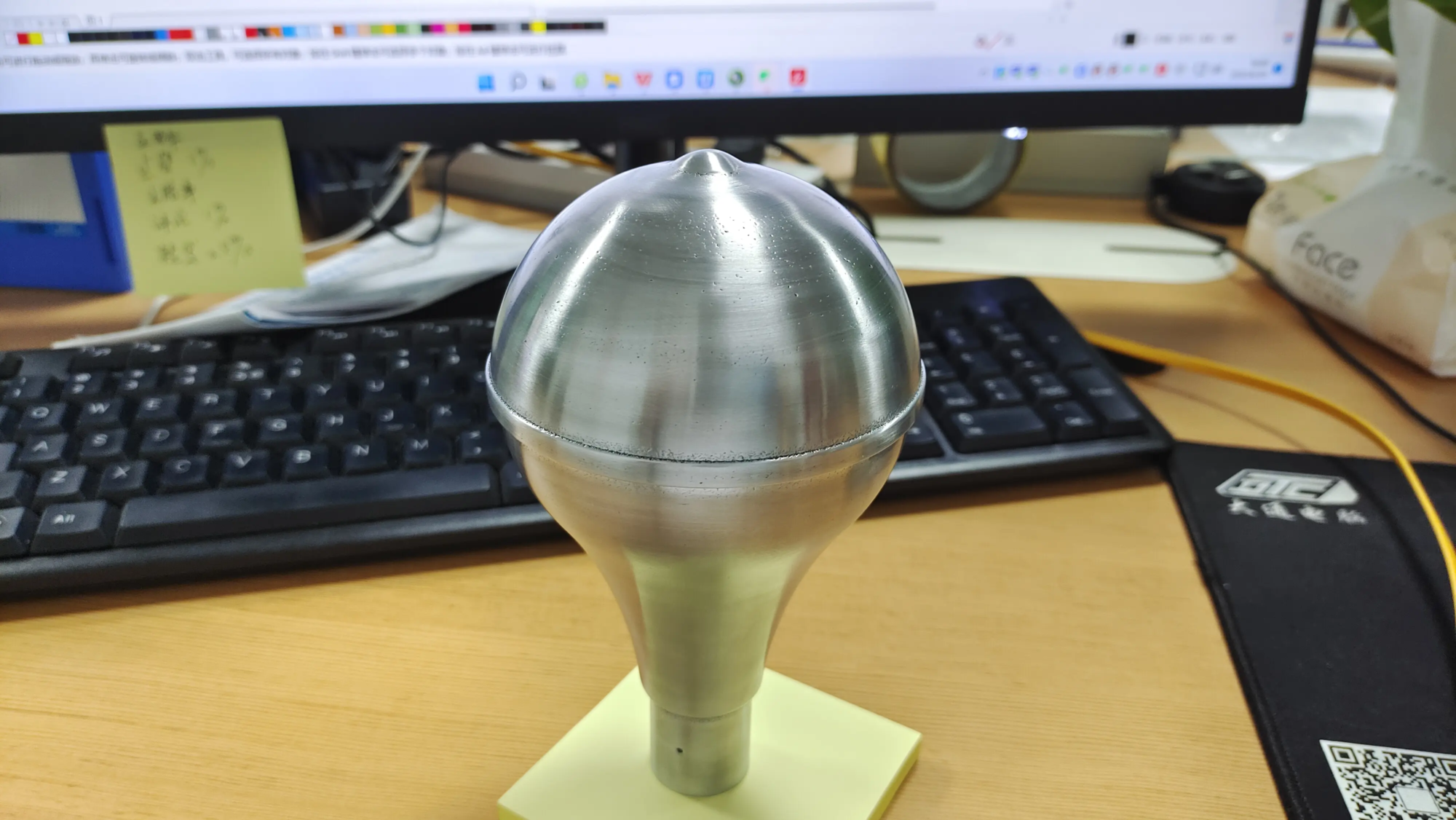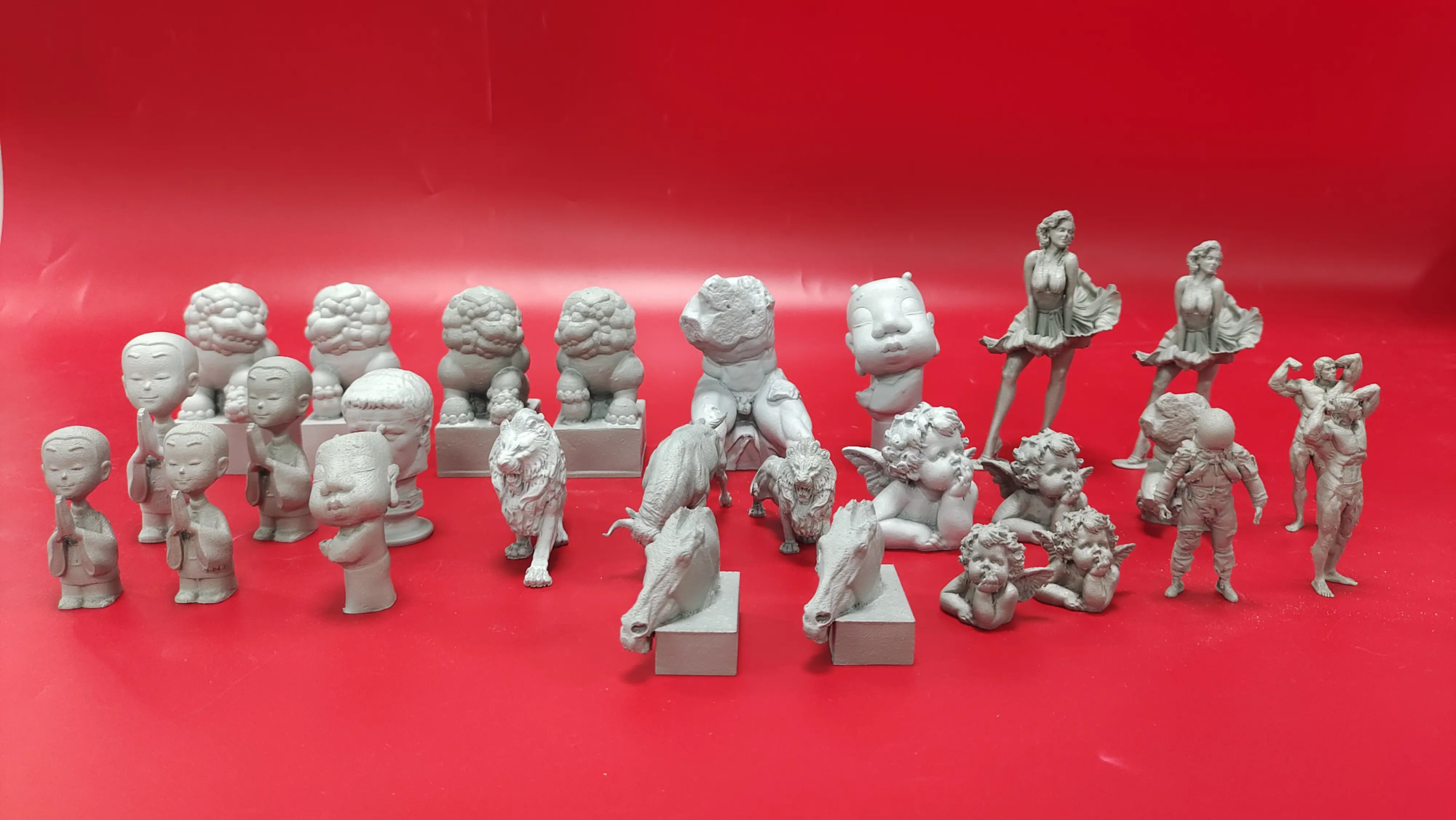The rise of silicone resins in 3D printing: flexibility to achieve accuracy
The 3D printed landscape once dominated by rigid plastics and metals is undergoing a quiet revolution Silicone technology. This innovative material offers the unrivalled elasticity, biocompatibility and temperature resistance of traditional silicones, which is unlocking new design possibilities throughout the industry. As a leader in rapid prototyping and additive manufacturing, Greatlight is at the forefront of leveraging this technology to solve complex manufacturing challenges.
What exactly is 3D printable silicone?
Unlike filaments or powders, silicone resins used for 3D printing are liquid photopolymers. They are mixed with photomes from silicone-based oligomers and polymers. When exposed to light at a specific wavelength (usually ultraviolet light), a photoelectric reaction process is called photoelectric occur. This will cause the liquid resin to solidify layer by layer, forming complex elastic components. Core chemistry takes advantage of the inherent advantages of silicone – flexibility, transparency, stability and chemical inertia – to make it fundamentally different from standard UV cured acrylic resins.
Key attributes that drive adoption:
- Elasticity and durability: Shows abnormal elongation (usually 200-400%) when broken through, resistive and fast rebound, ideal for deformed seals, grips and functional prototypes.
- Biocompatibility: Many formulas comply with ISO 10993/USP Class VI standards and can be used directly in medical devices, wearable devices and food contact applications after certification.
- Temperature resistance: Stable over a wide range (usually -40°C to 200°C+), performing better than the most common thermoplastics and standard resins.
- Chemical inert: Resistance to water, oil, solvents and UV degradation ensures long-term performance in harsh environments.
- Optical clarity: Certain grades offer a level of transparency comparable to glass and can be used in lenses, fluid channels, or aesthetic parts.
How silicone 3D printing works
The main technology for printing silicone is VAT photopolymerizationmainly DLP (Digital Light Processing) or MSLA (Stereometric Lithography of Mask). This is the process:
- Layer preparation: The building platform has reduced VAT filled with liquid silicone.
- Light exposure: The UV source (DLP projector, MSLA LCD screen) projects the pattern of the current slice onto the resin surface.
- photoelectric: The exposed area cures immediately.
- Layer progress: The platform is slightly raised and the curing layer is opened with the VAT bottom part. Fresh resin flows in and the process repeats until the part is finished.
- Post-processing: The parts are washed with solvents (usually industrial alcohol or professional solution) to remove unfixed resins and then After curing Under strong UV light, it is sometimes heated to achieve maximum material properties. Demolition support is also crucial.
Why choose silicone 3D printing?
- Complex functional prototypes: Create soft interfaces, biosimulation devices, stretchable sensors or complex elastic mechanisms without the need for expensive tools.
- Quick customization: Iterate and produce customized medical devices (prosthetics, hearing aid seals), customized gaskets or personalized consumer products.
- Comprehensive design freedom: Traditional silicone molding is impossible to make parts with integrated seals, embedded channels (fluids), living hinges and flexible connections.
- Speed and cost-effective (low volume): Eliminate mold lead times and costs for prototypes, custom parts and bridge production.
- Biocompatibility pathways: Provides a direct path to certified bioavailable parts, thus accelerating the development of medical devices.
Extended Horizon: Key Applications
- Medical & Healthcare: Surgical guidelines, patient-specific anatomical models (soft tissue), wearable health monitors, soft robots for rehabilitation, drug delivery devices, pipe connectors.
- Automotive and Aerospace: Protective covers for seals, gaskets, vibration dampers, flexible pipes, sensors and wiring.
- Consumer Products and Electronics: Ergonomic grips, waterproof seals of the equipment, flexible watches, components that absorb effects, and extrude the product.
- Industry and R&D: Fixtures and fixtures for exquisite assembly, custom fluid/reactor chambers, seals for analysis equipment, soft robot actuators.
- Art and Design: Flexible sculptures, realistic prosthesis, complex clothing elements.
Challenges and considerations
While there is hope, the technology is developing:
- Material Cost: Silicone is much more expensive than standard photopolymers.
- Limited material range: The available formulations (shore hardness, color, additives) are still growing compared to injection molded silicones.
- Printer requirements: Specialized DLP/MSLA printers optimized for the curing properties of silicone resins are needed.
- Post-processing: The steps after washing and curing are crucial and require appropriate solvents and equipment.
- Support removal: Designing and removing support from sophisticated, flexible parts can be challenging and requires expertise.
Greglime: Your Silicone Innovation Partner
exist Greatwe go beyond service providers; we are innovators in additive manufacturing solutions. Our commitment to solving complex rapid prototyping challenges extends completely to the field of silicone 3D printing.
- Advanced photopolymerization technology: We use state-of-the-art DLP and MSLA systems tailored specifically for the best results with high-performance silicones.
- Engineering expertise: Our team has deep material science knowledge and engineering acumen to help you select the right resin, optimize part orientation/support, and ensure successful printing for the most demanding elastomer applications.
- Comprehensive post-processing mastery: In addition to printing, we offer a complete set of finishing services that are essential for silicone parts – expert support, thorough solvent washing (including professional treatment solutions) and controlled UV/thermal postcuring to maximize material performance.
- Precise focus: For complex geometric shapes or hybrid designs, we seamlessly integrate silicone printing with advanced SLM (selective laser melting) capabilities for metal parts and a wide range of CNC machining services, providing true one-stop precision prototypes and production.
- Quickly customize and compete for quotes: With our extensive in-house features and streamlined processes, we can quickly and cost-effectively deliver customized silicone prototypes, ensuring you get the best solution at the best price.
in conclusion
Silicone resin 3D printing marks a major leap in the additive manufacturing industry, empowering designers and engineers to create parts with unparalleled flexibility, biocompatibility and environmental resistance directly from digital design. Despite challenges like cost and material diversity, it is able to quickly prototype and produce complex, functional elastic parts without tools. With the continuous development of materials and hardware, silicone printing is expected to be reshaped and manufactured in healthcare, automobiles, consumer goods, and more.
Ready to leverage silicone 3D printing to harness the potential of flexible innovation? Great Combining cutting-edge technology, material expertise and comprehensive post-processing to bring your most demanding elastic designs to life quickly and accurately. Contact us today for a free consultation and quote your next quick prototyping project.
FAQ (FAQ): Silicone 3D Printing
Q1: How strong are 3D printed silicone parts compared to traditionally molded silicone?
A: Attributes have achieved equality in key areas such as elongation and tear strength. However, raw material and process control are crucial. Greatlight’s stringent printing and curing protocols ensure that printed parts meet or exceed the performance requirements for prototypes and many end-use applications. The final properties are comparable to molded silicon such as LSR.
Question 2: Are 3D printed silicone parts really biocompatible and used in medical devices?
one: Yes, absolutely. Specific grades of UV cured silicone resins have been developed and clearly verified to comply with the International Biocompatibility Standard (ISO 10993, USP Class VI). Post-treatment, especially thorough washing to remove unfixed monomers and residues, is essential for achieving compliance. Greatlight has expertise and controlled processes to provide parts suitable for certified medical applications.
Q3: Is silicone resin 3D printing suitable for high volume production?
A: Currently, it is Prototyping, low to medium production and custom/on-demand manufacturing. Although for small batches, traditional LSR injection molding is still more economical at very high volumes. However, silicone resin 3D printing is ideal for bridge production, eliminating the need for expensive short-term tools and highly custom-made parts for impractical molding.
Question 4: What kind of surface surface and detail resolution can I expect?
Answer: Provided by VAT photopolymerization (DLP/MSLA) Excellent resolution – Usually capable of reducing functionality to 50-100 microns and smooth surfaces. Generally, layer lines are much less than FDM printing. Post-processing techniques such as tumbling can further enhance the feel and appearance of the silicone part.
Q5: What are the main limitations of 3D printed silicone?
Answer: Key limitations include:
- Higher material cost than standard resin or FDM filaments.
- More complex post-treatment requirements (washing, dedicated UV/thermal therapy).
- Remove the possibility of corruption during support on very subtle features.
- While growing, the range of coastal hardness, color and professional additives such as silicone oil remains less than the LSR range.
- Material properties sometimes vary slightly depending on batch to batch that requires process control.
Question 6: Why choose Greatlight for silicone 3D printing projects?
A: Provided by Greglight End-to-end solution combination:
- Expertise: Have deep experience in silicone and photopolymerization technology.
- Optimization process: Verified printing protocol, precise support for removal, thorough washing and effective fixation.
- Complete post-processing suite: Comprehensive internal finishing – No outsourcing delays.
- Materials and Application Insights: Guidelines for resin selection and design optimization are for functional silicone parts.
- Quick turnover and value: Effective workflows and advanced equipment deliver high-quality results at competitive prices tailored to your exact specifications, including custom material formulations.





